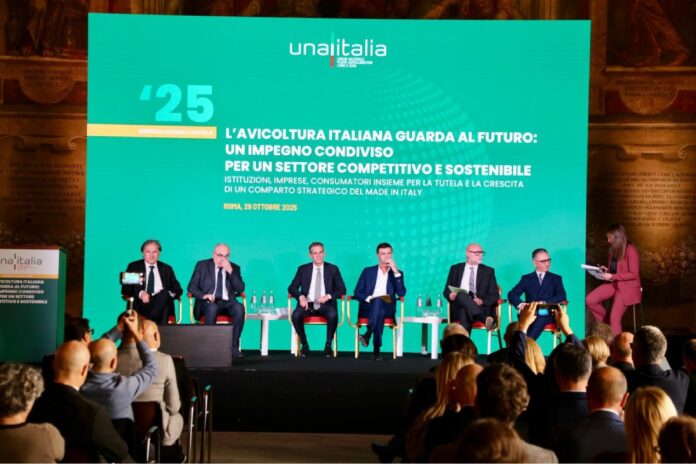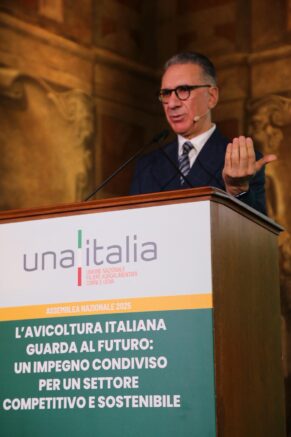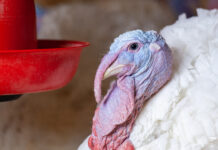
Italy’s poultry sector continues its strong upward trajectory. According to data released by Unaitalia, the National Association of the Poultry Industry, production of poultry meat in 2024 rose by 3.6%, while domestic consumption increased by 3.7%, reaching 22 kg per capita — the highest level in the past decade.
Unaitalia shared the results during its annual national assembly in Rome, confirming the industry’s resilience and capacity for growth despite challenging global and regulatory conditions. The Italian poultry sector now employs 64,000 people across the supply chain — including 25,500 in processing — and generates an annual turnover of €7.75 billion, up 3.3% from 2023. Poultry meat now accounts for 44% of all meat purchased by Italian consumers and 34% of total household spending on meat, consolidating its position as an accessible, versatile, and sustainable source of protein.
Egg sector also on the rise
Performance in egg production was equally strong, with 3% growth in output and a 3.8% increase in consumption in 2024, reaching 218 eggs per capita. Household penetration stood at 94%, the highest among all animal protein sources. The upward trend continued in early 2025, with a 10% increase in sales volumes in retail and grocery channels.
According to Ismea 2025 data, between 2021 and 2024 poultry meat and eggs recorded the strongest growth among all animal proteins purchased by Italian households (+11.8% and +9.7%, respectively).
A model of efficiency and transparency
Unaitalia President Antonio Forlini highlighted the sector’s ability to maintain stability amid an evolving geopolitical and regulatory landscape and the ongoing risk of avian influenza across Europe.

“The Italian poultry industry stands out for its integrated model, combining efficiency, flexibility, and the ability to evolve with consumer trends,” said Forlini. “This year marks the 20th anniversary of our Poultry Meat Labelling Code — a strategic tool ensuring traceability and coherence of voluntary labelling across the supply chain.”
Today, 76% of national production follows Unaitalia’s Labelling Code, and one-third of Italian poultry production meets animal welfare standards that go beyond legal requirements. Among these, 61% of farms use environmental enrichments, 66% provide natural light, 33% adopt reduced stocking densities, and 8.5% use slower-growing breeds.
The Code, approved in 2005 by the Italian Ministry of Agriculture and verified by the independent certification body CSQA, is now in its eighth revision. Forlini described it as a voluntary and forward-looking commitment, reflecting the industry’s pursuit of balance between sustainability, accessibility, and competitiveness.
Significant progress in antibiotic reduction
Another milestone underscoring the sector’s long-term responsibility is the 95% reduction in antibiotic use in poultry production between 2011 and 2024 (Unaitalia analysis based on ClassyFarm data). This achievement stems from a voluntary plan launched over ten years ago, aimed at safeguarding both animal health and consumer trust.
Ensuring competitiveness and fair trade
With a self-sufficiency rate exceeding 105%, the poultry sector remains Italy’s only fully self-sufficient livestock industry. However, Unaitalia called for a shared national strategy with institutions to ensure fair competition and economic resilience.
The association outlined several priorities:
• Reciprocity in international trade agreements, particularly with Brazil (Mercosur), Thailand, and Ukraine, supported by regular audits and automatic safeguard mechanisms in the event of market disruptions.
• Mandatory origin labelling for poultry meat in Ho.Re.Ca. channels and on online platforms, to ensure transparency and consumer protection in out-of-home consumption.
• Stronger coordination on avian influenza prevention and response, including funding for vaccination campaigns and faster compensation procedures for farms affected by health restrictions.
“We will continue to advocate for these priorities within the newly established poultry sector roundtable at the Ministry of Agriculture and Food Sovereignty,” Forlini concluded. “Italian poultry producers are committed to working with all stakeholders to strengthen the sector’s competitiveness and sustainability for the years ahead.”
Source: Unaitalia
















